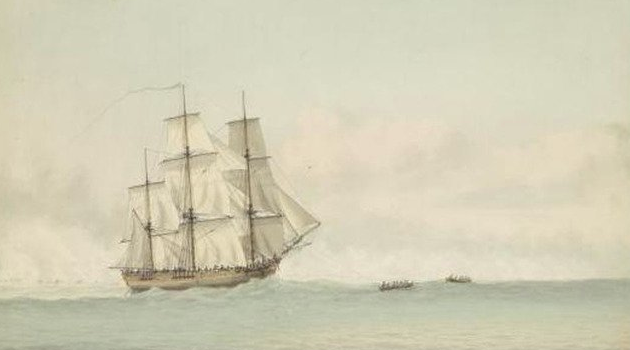Pioneering British steamship, The Thames, discovered in Russia
The Thames steamship sank in the Russian Arctic in 1878. Now researchers have found the pioneering vessel in the bed of the Yenisei river.
The Thames was a 120-tonne steamship, and was one of the first vessels to navigate the North East Passage shipping route.
It was captained by Norwich-born explorer Joseph Wiggins, who was determined to open a sea route between the UK and Siberia.
He was keen to show the practicality of establishing the route, which many claimed was impossible.
Beginning his voyages in 1874, he successfully navigated the Ob river in western Siberia.
He then proceeded to sail the Thames up the Yenisei river in 1876, the largest river flowing into the Arctic.

Joseph Wiggins. Credit: Wikimedia Commons
According to the Russian Geographical Society website, the Thames ran aground in 1877, forcing Wiggins to return to England by land.
The ship froze to the bottom of the river before sinking during the spring thaw in 1878.
Members of the Russian Geographical Society began their 30-day expedition to find the Thames on 5 July.
They discovered the wreck in shallow water near to the town of Turukhansk.
Its stern was above the river bed, while the rest remains buried.
Further archeological work is to be carried out to see if the Thames can be raised.
Speaking to the Interfax news agency, expedition member, Alexander Goncharov, said: “It’s difficult to say how well the steamship was preserved. The ship is full of silt and sand, and only part of the stern superstructure is visible.”
Researchers also believe they’ve discovered the wreck of the Russian schooner, Northern Lights.
Graves of the Russian sailors, who perished when the ship was forced to winter on the Yenisei river in 1876-77, were also found.
Final push to save WW1 ship, HMS President, from the scrapyard
The HMS President Preservation Trust has launched a final appeal to save London's last remaining World War One ship after…
Pictures: Mary Rose warship to go on full public display
For the first time since it was raised from the seabed, the Tudor flagship, Mary Rose will go on full…
Researchers believe they’ve found Captain Cook’s Endeavour
The Rhode Island Marine Archaeology Project says it has now narrowed down the search for HMS Endeavour to a group…












